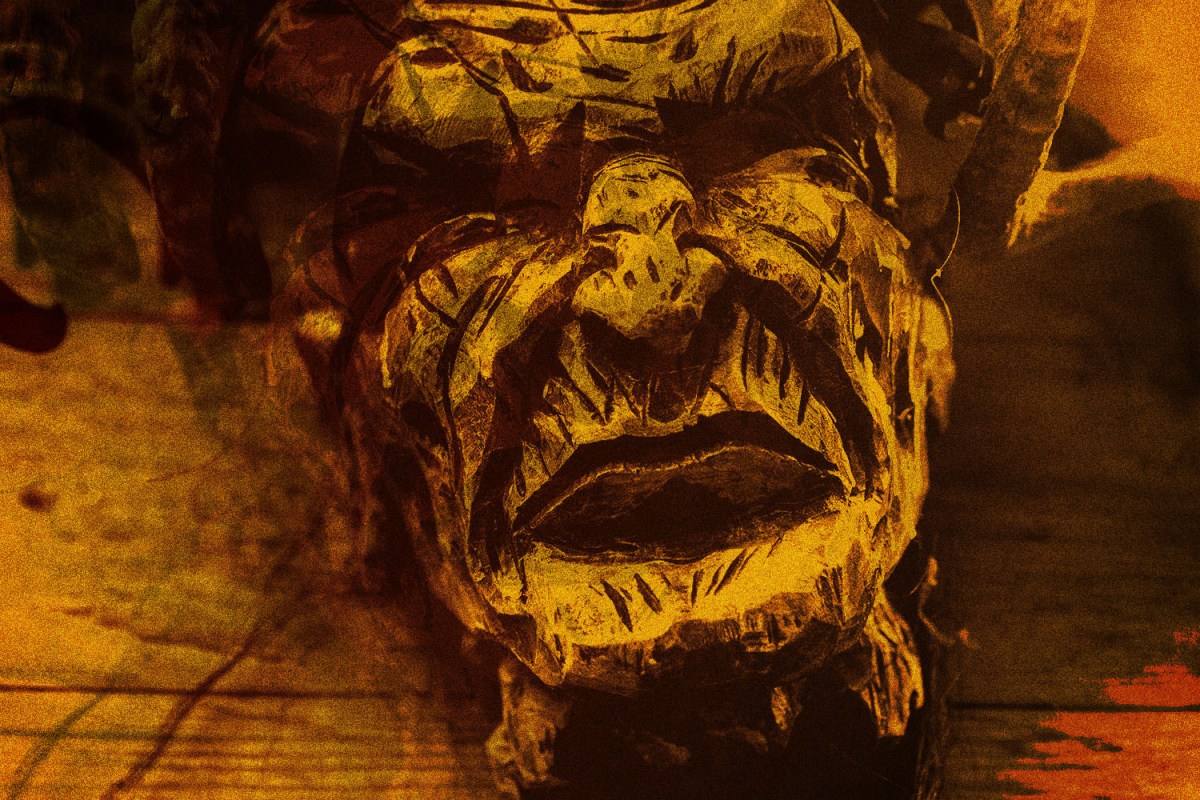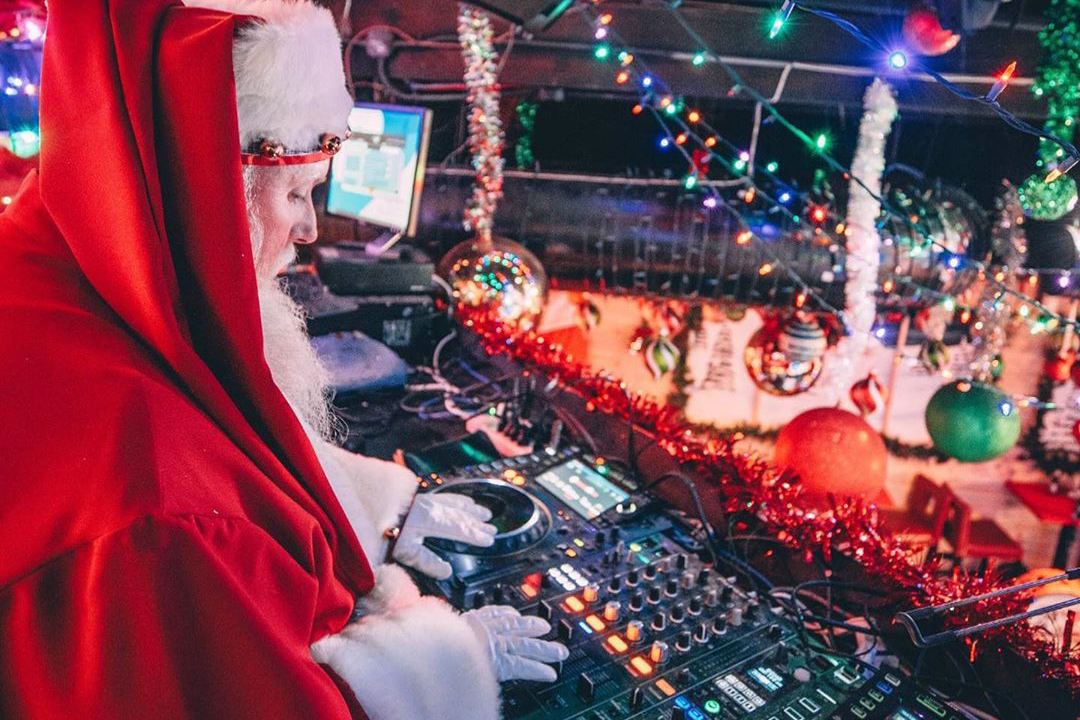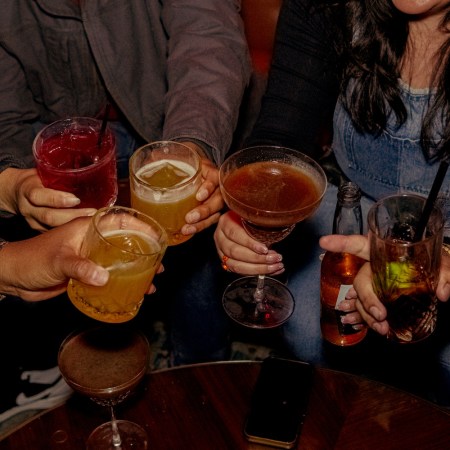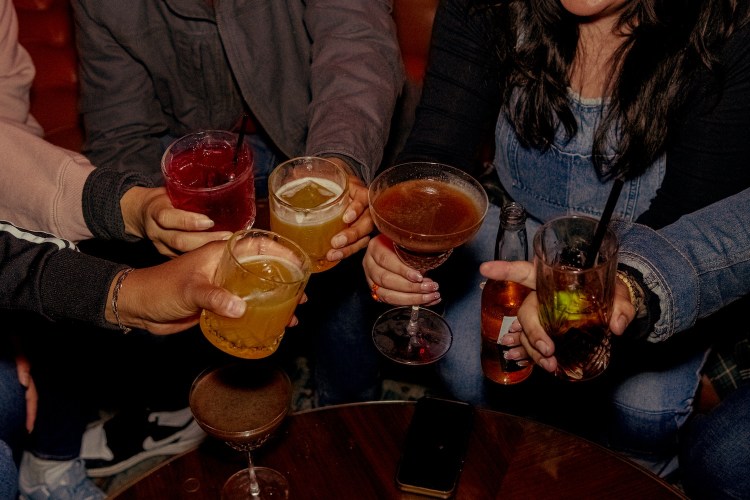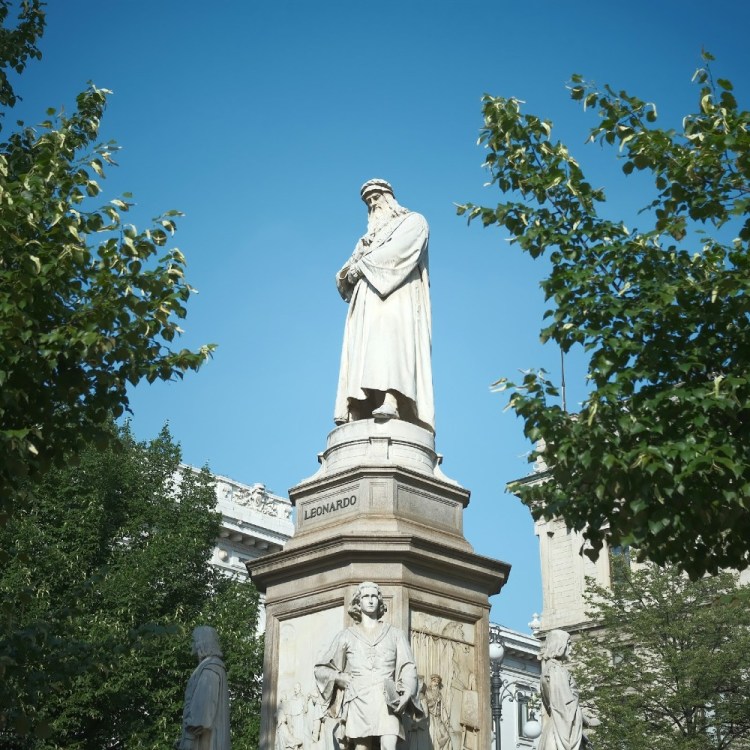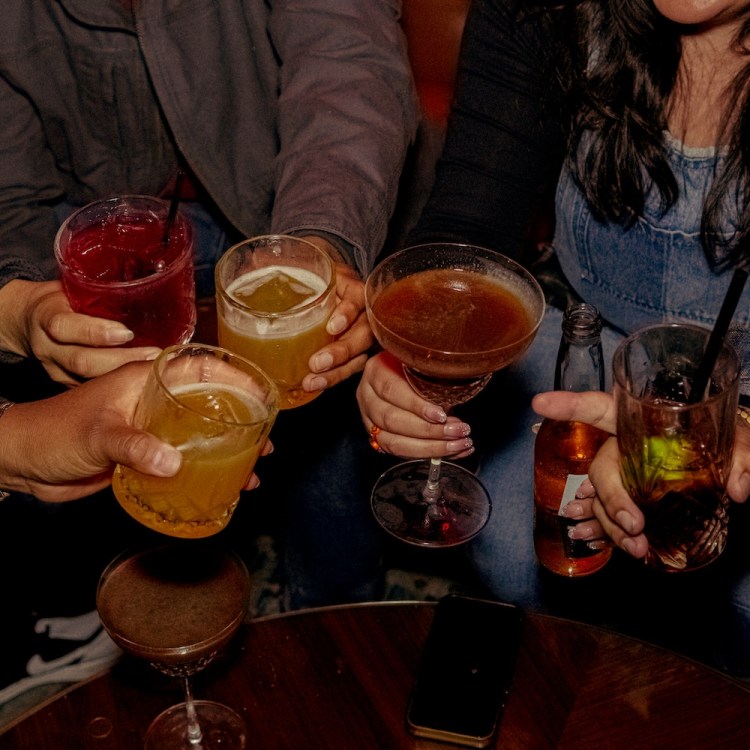Here in America, we traditionally think of Christmas as being a sweet, cozy holiday full of niceties: brightly wrapped presents, twinkling lights, a genteel old man in a red suit who appears to give you presents, visions of sugar plums, that sort of thing. Sure, there’s the threat of a lump of coal in a stocking, used to keep naughty children in check, but that’s still pretty tame compared to the horned, anthropomorphic goat demon with an affinity for schnapps who shows up to whip misbehaving children with a bundle of birch branches, toss them into a large sack and — depending on which variation of the legend you subscribe to — either eat them or drag them to hell.
We’re talking, of course, about Krampus, the Christmas villain from German and Austrian folklore who serves as a malevolent foil to Saint Nicholas. As the story goes, every Dec. 5 on a night dubbed Krampusnacht (or “Krampus Night”), St. Nicholas and Krampus go from home to home; St. Nick distributes oranges, dried fruit and chocolate to the good children, while Krampus unleashes his wrath upon the bad ones. Though his exact origins are unclear and believed to date back to pre-Christian Alpine traditions, anthropologists generally believe he’s been terrorizing European children since the 17th Century.
Go to any German or Austrian Christmas market today, and you’ll find plenty of Krampus masks. You may even find a man dressed as Krampus, like a twisted version of our mall Santas for parents to use to spook their children. There’s also the Krampuslauf (“Krampus Run”), an event in which revelers get drunk, dress as Krampus and run through the streets like some cursed cross between SantaCon and the Running of the Bulls. And yet, up until the last decade or so, Krampus remained largely unknown in America. Take, for instance, the audience reaction to actor Christoph Waltz — who grew up in Vienna — in his 2014 appearance on The Tonight Show with Jimmy Fallon as he describes Krampus. Their shocked laughter indicates most of them had never heard of such an insane creature before, and at multiple times throughout the segment, Fallon interrupts to clarify that “This is real.”
Since then, however, we’ve gone Krampus-crazy. There are Krampus-related events (including traditional Krampuslaufs as well as more simple bar crawls) in cities like Chicago, Los Angeles, Philadelphia, Washington, D.C., Dallas and New Orleans, and there have been at least 10 Krampus-themed horror movies released in North America thus far. (The most mainstream example of these is 2015’s Krampus, a horror comedy starring Adam Scott and Toni Collette that developed a strong cult following and grossed $61 million worldwide.) In 2012, The League aired an episode called “A Krampus Carol,” and in 2013, NBC’s fantasy series Grimm put out its “Twelve Days of Krampus” episode. A 2013 episode of the animated series American Dad! called “Minstrel Krampus” featured Danny Glover as the voice of the holiday demon, along with soul singer Charles Bradley as his singing voice. A 2016 episode of ABC’s American Housewife about the so-called “War on Christmas” was titled “Krampus Katie,” and in 2018 Netflix’s supernatural Chilling Adventures of Sabrina featured Krampus in “A Midwinter’s Tale.”
There are Krampus-themed graphic novels, Krampus-themed songs, even Krampus-themed booze. Southern Tier, Strange Fellows Brewing, The Black Abbey Brewing Company, Angry Chair Brewing, Revolution Brewing and Southern Star Brewing all have beers that bear the Krampus name. Even the craft beers named after Santa often have a Krampus connection. Rogue Ales’ official website describes this year’s edition of its Santa’s Private Reserve thusly: “When Santa caught Krampus stealing his beloved rum balls, he offered Krampus a choice: either give them back, or wrestle for ’em. Krampus, blinded by the allure of the delicious sweets, chose to face Santa in the ring. A poor choice, as not even a full minute into the fight, Santa knocked Krampus down and landed a devastating elbow drop. Krampus, writhing in pain, conceded the match and handed over the rum balls. The elbow drop, forever known as the Kringle Krusher, and Santa’s love for the confection are the inspiration for this year’s Santa’s Private Reserve.”
But how did we get here? What is it, exactly, about a mythical horned demon meant to intimidate kids into obedience that has resonated so deeply with us here in the States all of a sudden?
There is, of course, the humor and absurdity of it all. Everything about Krampus is so hilariously, stereotypically German. (If you couldn’t tell from my last name in my byline, I’m allowed to say that.) Of course a country we often associate with stoicism and authoritarianism would turn a holiday that’s supposed to be about joy and magic into one in which children are tormented with the threat of being transported to hell by a goat-man if they step out of line. It flies in the face of everything we’ve been taught about Christmas in such an over-the-top way that we can’t help but laugh. Even the name “Krampus” sounds cartoonishly evil. It’s perfect.
But when you really think about it, Krampus isn’t that far off from how we do Christmas in America. All of the best Christmas songs are sad ones. Our most beloved holiday movies — the ones that air on repeat every December — feature Christmases that are nearly (or completely) threatened by chaos and despair. National Lampoon’s Christmas Vacation, for example, features Clark Griswold (Chevy Chase) doing his best to grin and bear it as his family is faced with one disaster after another. Even It’s a Wonderful Life, which boasts perhaps the most heartwarming ending of all time, makes us earn it by watching a suicidal George Bailey unravel under the pressures of financial ruin, exploding at his wife and children on Christmas Eve and getting drunk and belligerent before he’s pulled from the icy waters he’d leapt into by his guardian angel.
We need the bad to appreciate the good. The message of Christmas Vacation and It’s a Wonderful Life isn’t some BS about “the magic of Christmas” bringing us a happy ending; it’s a reminder that sometimes, things don’t go as planned, and all we can do is surround ourselves with people we love and find a little solace in knowing that they’ve got our backs. The nightmarish Christmases — even the ones that may not have a happy ending like the movies — make us appreciate the better ones, and they ensure that we don’t take the people who show up to help us pick up the pieces for granted. We need the dark, frigid cold outside to help us feel warm and cozy inside. Maybe that’s why we’ve fallen in love with Krampus. He’s the anti-Santa, and every hero needs a villain; what would they be without each other? But beyond that, as we steel ourselves for the second pandemic Christmas in a row, there’s something comforting about a reminder that the holidays don’t always have to be perfect. Sometimes you get what you’ve been dreaming of, and sometimes you get carted off to hell by a beast with cloven hooves, but either way, it’s Christmas. What’s not to love about that?
This article appeared in an InsideHook newsletter. Sign up for free to get more on travel, wellness, style, drinking, and culture.
